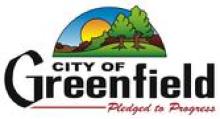
Fast, affordable Internet access for all.

Greenfield city officials and school administrators recently agreed to cooperatively build a fiber-optic institutional network (I-Net). The Milwaukee suburb of about 37,000 expects to trim thousands of dollars from its annual network bill and bring its students, teachers, and local government up to speed.
Dig Now, Save Now
Just like many communities across the U.S., Greenfield realized that it was paying too much to connect its community anchor institutions (CAIs) to the Internet. In April 2015, Greenfield school district approved a bandwidth upgrade with a private provider that would cost the schools $45,588 annually. Within half a year, they had already hit their new bandwidth limit. In November 2015, they needed to upgrade again to the tune of $119,141 per year.
With classrooms and public institutions demanding increasingly higher bandwidth, local officials decided to ditch the incumbent providers to build a fast, affordable, reliable network in the coming semester. Their investment will allow them to make long-term budgeting decisions, direct more money toward classroom expenses, and use technology to offer rich educational experiences.
Construction started in June on the fiber-optic network that will connect Greenfield school district, neighboring Whitnall school district, Alverno College, and Greenfield public safety buildings. With installation slated to finish by summer’s end, local institutions expect immediate savings.
Financial Terms
The City of Greenfield, Greenfield School District, and Whitnall School District all applied for state trust fund loans through the Board of Commissioners of Public Lands of Wisconsin (BCPL).
Michael Neitzke, Greenfield’s mayor, expects the town to repay it share - a $700,000 loan from BCPL - within 10 years thanks to annual telecommunications savings. The school districts anticipate even shorter repayment periods. Officials at Greenfield School District expect to pay off their loan within 4 years, according to Superintendent Lisa Elliot. The School District of Whitnall authorized a $440,000 loan from BCPL with a 5-year repayment term at an interest rate of 2.5 percent.
More Than Just Money
Greenfield hopes its network will impact the community beyond the balance sheet. In addition to blazing fast download speeds, fiber-optic networks feature faster upload speeds that shorten data transfer times, opening the door to a variety of indirect benefits for public safety and education. Greenfield Now quoted Nietzke, who said:
“Benefiting most in local government are police and paramedics... Police especially depend heavily on getting data and lots of it. Based on the increasing need of law enforcement, an upgrade of this kind would have been made, anyway.”
The school districts are also excited for new possibilities. Greenfield and Whitnall will consider sharing the costs of virtual classrooms, where students in either district could attend classes via the Internet. Their partnership with the city will allow the school districts to save substantially on telecommunications costs; school officials can direct funds toward educating students, maintaining infrastructure, or other important necessities.
Ottawa, Kansas, and Monticello, Illinois, are two other communities where schools and local government have teamed up to save public dollars while simultaneously obtaining better connectivity. Schools can use federal E-rate funds to pay for the cost of Internet infrastructure investment, reducing the overall cost for deployment. Money saved by lowering telecommunications costs can later be re-invested. When a city strategically locates fiber-optic rings, they can later expand their network to serve other CAIs, businesses, or residents.
Regardless of how far Greenfield eventually takes their network, these first steps will result in significant cost reduction and a valuable publicly owned asset.
